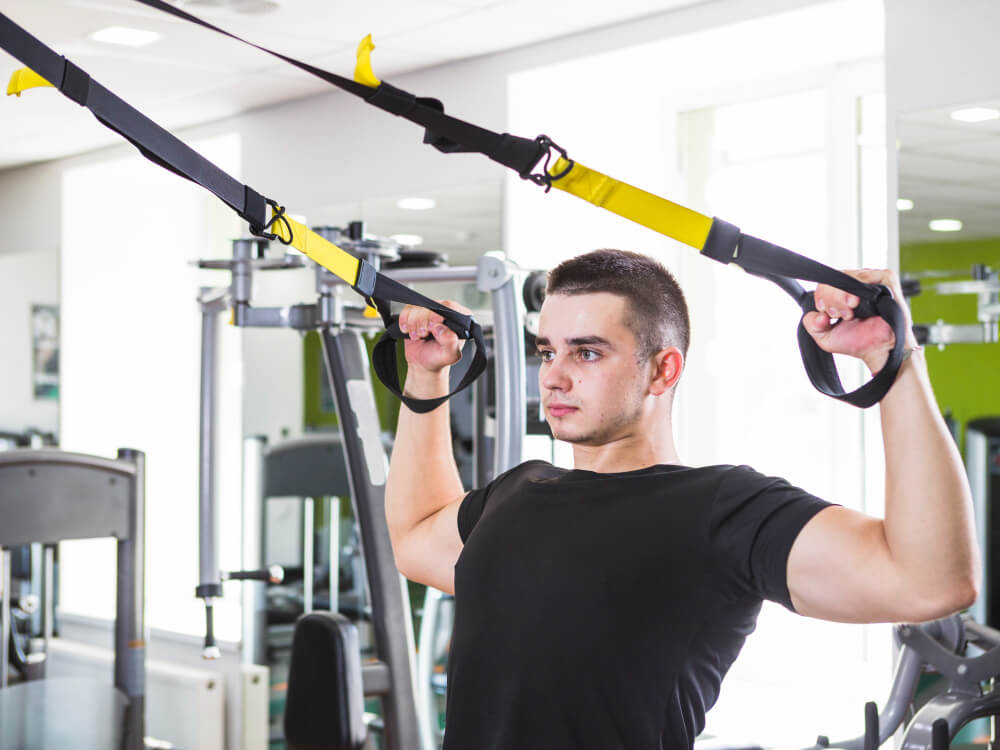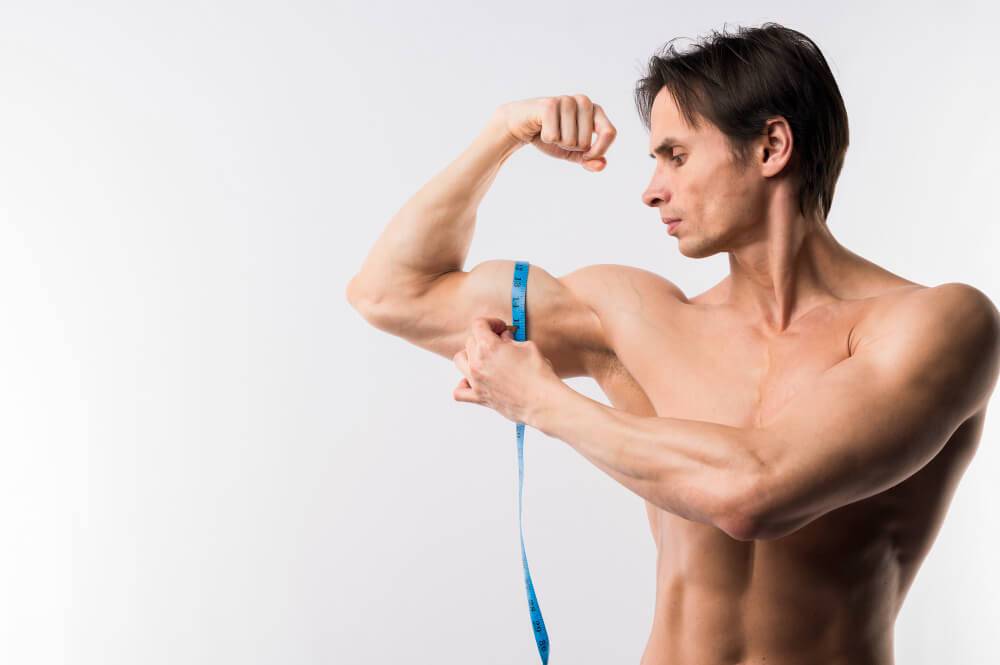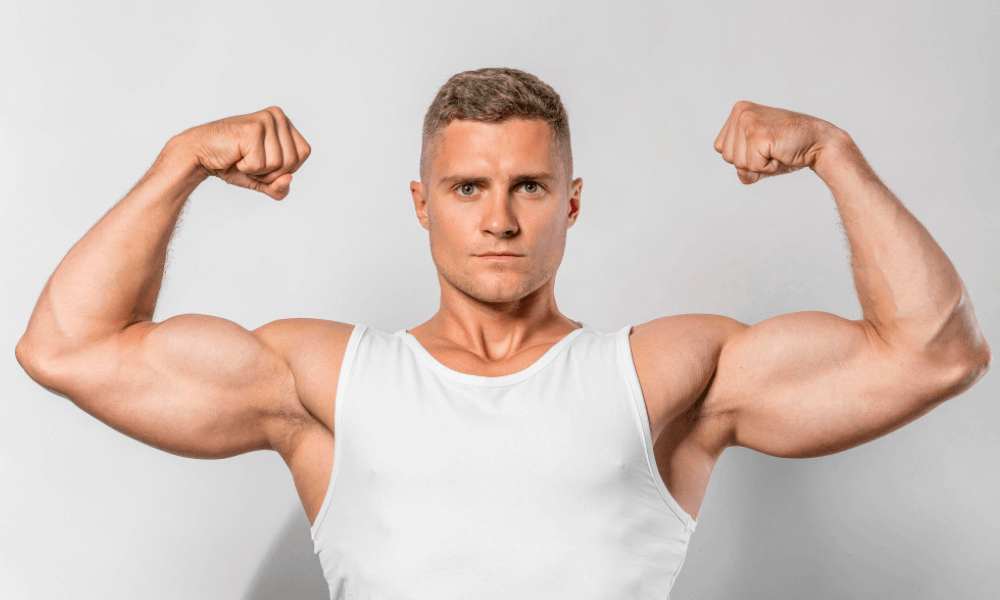Are you looking to take your arm workouts to the next level? Whether you’re a fitness enthusiast, a regular gymgoer or a seasoned bodybuilder, the cable machine offers diverse exercises that can help you achieve sculpted, powerful arms.
In this post, we’ll explore eight effective cable machine arm workouts, share tips for maximizing their effectiveness, and provide a sample routine to get you started.
Why Choose Cable Machine Exercises?

Cable machine exercises are a popular choice for many gym-goers and bodybuilders. These workouts offer several benefits that make them stand out from traditional free weight exercises. Let’s explore why incorporating cable machine workouts into your routine is a smart choice.
Firstly, cable machines provide constant tension throughout the entire range of motion. This means your muscles are working hard from the beginning to the end of each exercise.
Secondly, cable machines allow for more varied angles and movements, targeting different parts of your arm muscles effectively.
Lastly, cable workouts can be safer for beginners as they provide controlled motion routes, lowering the risk of damage.
Arms Anatomy

To optimize your cable machine workouts, it’s beneficial to have a basic understanding of arm anatomy. The arm muscles are primarily divided into three major groups: the biceps, triceps, and forearm muscles.
Biceps Brachii
The biceps brachii, commonly known as biceps, consist of two heads: the long head and the short head.
These muscles are responsible for elbow flexion, forearm supination (rotating the palm upwards), and shoulder flexion. The biceps are located at the front of your upper arm, providing the bulk of the arm’s flexing power.
Triceps Brachii
The triceps brachii, or triceps, consist of three heads: the long head, lateral head, and medial head.
These muscles are situated on the back of the upper arm and are mainly responsible for elbow extension, which allows to straighten the arm.
The triceps make up the majority of the upper arm’s muscle mass, playing a key role in pushing movements.
Forearm Muscles
The forearm is composed of numerous muscles that control movements of the wrist, hand, and fingers. These muscles can be divided into two main groups:
- Flexors: These are located on the anterior (front) part of the forearm and are involved in bending the wrist and fingers.
- Extensors: Located on the posterior (back) part of the forearm, these muscles extend the wrist and fingers.
Strengthening the forearm muscles is crucial for a firm grip and overall arm stability.
Deltoid Muscle
Although not technically part of the arm, the deltoid muscle covers the shoulder jointand plays an essential role in arm movement. This muscle has three parts: the anterior, lateral, and posterior deltoid, each contributing to different types of shoulder movements including lifting, rotating, and stabilizing the arm.
By understanding the anatomy of the arms, you can better target these muscle groups during your workouts, ensuring balanced muscle development and enhancing the effectiveness of your exercises.
8 Effective Cable Machine Arm Workouts
Ready to get started? Here are eight highly effective cable machine arm exercises to build strength in your arms.
Each exercise includes step-by-step instructions to ensure proper form and maximum results.
Cable Bicep Curl
The cable bicep curl is a fantastic exercise for isolating the biceps and achieving a great pump. Here’s how to do it:
How to :
- Attach a bar to a low pulley on cable machine.
- Stand facing the machine, grip the bar with an under-hand grip and keeping your elbows close to your torso.
- Curl the bar towards the shoulders, and squeeze your biceps at the top.
- Slowly lower the bar back to start and repeat the process.
Common Mistakes to Avoid
- Using Too Much Weight: Lifting too much weight can affect form and raise the risk of injury. Begin with a moderate weight and work on good technique.
- Swinging the Body: Avoid using momentum to lift the weight. Keep your upper body still and let your biceps do the work.
- Elbow Positioning: Ensure your elbows stay close to your torso throughout the movement to effectively target the biceps.
- Neglecting the Eccentric Phase: Don’t drop the weight quickly. Control the motion as you lower the bar to maximize muscle engagement.
By avoiding these common mistakes and following the tips above, you can enhance the effectiveness of your cable bicep curls and get closer to achieving those sculpted arms.
Cable Tricep Pushdown
For well-defined triceps, the cable tricep pushdown is a must-try. Follow these steps:
How to :
- Attach a straight bar or rope to the high pulley on the cable machine.
- Stand facing the machine, grab the attachment with an overhand grip, and keep your elbows close to your body.
- Push the bar or rope down until your arms are fully extended, squeezing your triceps at the bottom.
- Slowly return to the starting position and repeat.
Common Mistakes to Avoid
- Using Too Much Weight: Similar to bicep curls, using excess weight can lead to improper form and unnecessary strain on your elbows.
- Flaring Elbows Out: Keep your elbows close to your body throughout the movement to ensure you are effectively targeting the triceps.
- Rushing the Rep: Avoid performing the exercise too quickly. Focus on controlled movements to fully engage the triceps.
- Partial Range of Motion: Make sure you fully extend and contract your arms in each rep to maximize muscle activation and growth.
By adhering to these tips and avoiding common errors, you can perform cable tricep pushdowns more effectively and build stronger, more defined triceps.
Related Articles: 8 Best Arm Workout With Barbell for Defined Arms – Try Now!
Cable Overhead Tricep Extension
This workout focuses on the long head of the triceps, adding thickness to your arms:
How to :
- Attach a rope to the low pulley and stand with your back to the machine.
- Grab the rope in both hands and lift your arms overhead.
- Slowly lower the rope behind head, keeping elbows close to your ears.
- Extend your arms back to the starting position and repeat.
Common Mistakes to Avoid
- Incorrect Elbow Positioning: Ensure your elbows stay close to your ears throughout the exercise. Allowing them to flare out reduces the effectiveness and increases the risk of injury.
- Using Excessive Weight: Lifting too heavy can cause improper form and strain on your shoulders and elbows. Begin with a lighter weight and work on perfecting the technique.
- Arching the Back: Avoid arching your back as you extend your arms. This can cause lower back pain. Reduce the focus on the triceps.
- Rushing the Movement: Performing the exercise too quickly can prevent full muscle engagement. Focus on slow, controlled movements for better results.
- Neglecting Warm-Up: Skipping a proper warm-up can increase the risk of injury. Always ensure your triceps and shoulders are adequately warmed up before starting.
By paying attention to these common mistakes and following the tips provided, you can ensure that your cable overhead tricep extensions are both safe and effective in building stronger triceps.
Cable Hammer Curl
The cable hammer curl targets the brachialis muscle, contributing to overall arm size:
How to :
- Attach a rope to the low pulley.
- Stand facing the machine, grab the rope using a neutral grip and keep your elbows close to your torso.
- Curl the rope towards your shoulders, squeezing your brachialis at the top.
- Slowly lower the rope back to its starting position and repeat.
Common Mistakes to Avoid
- Swinging the Rope: Using momentum to swing the rope up rather than lifting it with your muscles can reduce the effectiveness and increase the risk of injury. Focus on controlled, deliberate movements.
- Incomplete Range of Motion: Avoid cutting the movement short. Fully extend your arms towards the bottom of the exercise and fully contract them at the top to maximize muscle engagement.
- Using Too Much Weight: Lifting excessive weight can compromise your form and place undue stress on your shoulders and elbows. Begin with a comfortable weight and progress gradually.
- Rushing the Movement: Performing the exercise too quickly can prevent your muscles from fully engaging. Focus on slow, controlled reps for better muscle activation.
By keeping these common mistakes in mind and following the effectiveness tips, you can perform cable hammer curls with better form and achieve more substantial muscle gains.
Note: In this article, I have listed the best 8 Cable exercises for optimal arms growth. If you want to know about more exercises you can visit here and here.
Cable Reverse Curl
This exercise focuses on the brachioradialis muscle, enhancing forearm strength and appearance:
How to :
- Attach a rope to the lower pulley.
- Stand facing the machine, grab the bar with an over-hand grip, keeping your elbows close to your torso.
- Curl the bar up to your shoulders, focusing on your forearms.
- Slowly bring the bar back to its initial position and repeat.
Common Mistakes to Avoid
- Swinging the Body: Avoid using momentum to lift the weight.
- Incorrect Grip: Using an improper grip might strain your wrists and reduce the focus on the brachialis.
- Partial Range of Motion: Ensure you complete the full range of motion in each rep to fully engage the brachialis muscle.
- Neglecting Core Engagement: Failing to keep your core tight can lead to instability and poor form.
- Using Excess Weight: Lifting too heavy can compromise your technique and lead to improper muscle engagement.
By avoiding these common mistakes and adhering to the above tips, you can effectively perform cable hammer curls and build stronger, well-defined arms.
Cable Rope Curl
The cable rope curl is excellent for adding variety to your bicep workouts:
How to :
- Attach a rope to the low pulley.
- Stand facing the machine, grab the rope with a neutral grip, and keep your elbows close to your torso.
- Curl the rope towards your shoulders, squeezing your biceps at the top.
- Slowly lower the rope back to the initial position and repeat.
Common Mistakes to Avoid
- Swinging the Body: Avoid using momentum to lift the weight. Swinging your body reduces the effectiveness of the exercise and increases the risk of injury.
- Over-Gripping: Gripping the rope too tightly can lead to unnecessary tension in your forearms and reduce focus on the biceps.
- Elbows Flaring Out: Keep your elbows close to your torso to ensure maximum bicep engagement. Flaring them out can take the focus away from the intended muscles.
By avoiding these usual mistakes and applying the suggestions provided, you can optimize your cable rope curls for better biceps development.
Single-Arm Cable Tricep Extension
This unilateral exercise ensures balanced tricep development:
How to :
- Attach a handle to the high pulley.
- Stand facing the machine, grab the handle with one hand while keeping your elbow close to your body.
- Extend your arm down until it’s fully extended, squeezing your tricep at the bottom.
- Slowly return to the starting position and repeat on the other arm.
Common Mistakes to Avoid
- Swinging the Arm: Ensure you keep your upper arm stationary throughout the movement. Swinging can reduce the effectiveness and increase the risk of injury.
- Using Too Much Weight: Avoid using excessive weight that can compromise your form. Focus on using proper form and technique with a manageable weight.
- Incomplete Range of Motion: Make sure you fully extend and contract your arm in each rep to maximize muscle activation.
- Rushing the Rep: Performing the exercise too quickly can prevent full muscle engagement. Use a slow, controlled pace for better results.
- Neglecting the Opposite Arm: Ensure you perform the exercise on both arms evenly to maintain balanced tricep development.
By avoiding these common mistakes and employing these tips, you can perform single-arm cable tricep extensions more effectively, leading to stronger, more defined triceps.
Cable Concentration Curl
For peak bicep contraction, the cable concentration curl is unmatched:
How to :
- Attach a handle to the low pulley.
- Sit on a bench, grab the handle with one hand, and rest your elbow on your inner thigh.
- Curl the handle towards your shoulder, squeezing your bicep at the top.
- Lower the handle back to its starting position, and repeat on the other arm.
Common Mistakes to Avoid
- Elbow Movement: Ensure your elbow remains stationary on your thigh throughout the entire movement. Allowing it to move can reduce the focus on your bicep.
- Using Momentum: Avoid the use of momentum to lift weights. Make sure the movement is solely controlled by your bicep to maximize its activation.
- Lack of Full Extension: Not fully extending your arm at the bottom of the rep can limit the range of motion and muscle engagement. Always perform a full extension for optimal results.
- Fast Reps: Performing the curls too quickly can prevent adequate muscle contraction and increase the risk of injury. Aim for slow, controlled reps.
By avoiding these common mistakes and incorporating these tips, you can maximize the effectiveness of cable concentration curls and achieve better bicep development.
Related Articles: Top 9 Medial Head Tricep Exercises For Sculpted And Strong Arms
Tips for Maximizing These Exercises
To get the most out of your cable machine workouts, follow these expert tips:
Focus on Form
Proper form is crucial for neglecting injuries and ensuring you target the right muscles. Keep your movements under control and avoid using momentum.
Adjust the Weight
Start with a lighter weight that allows to perform each exercise with good form. Gradually increase the weight as you become more comfortable and stronger.
Incorporate Variety
Change your exercises frequently to keep your muscles challenged and prevent plateaus. Try different attachments and angles to target your muscles from various directions.
How Food and Sleep Affect Muscle Growth
Exercise is only part of the equation for building strong, defined arms. Nutrition and rest play equally important roles in muscle growth and recovery.
Eat a Balanced Diet

Eat a diet high in healthy fats, carbs, and protein. Protein is essential for muscle repair and growth, while carbohydrates provide energy for your workouts.
Stay Hydrated

Water is essential for both muscular and general health. Try to drink eight cups of water or more if you work out vigorously each day.
Prioritize Rest

Muscles grow during rest, not during workouts. Ensure you get enough sleep and give your muscles time to recover between intense workout sessions.
Sample Arm Workout Routine
Ready to put these exercises into action? Here’s a sample cable machine arm workout routine to get you started:
- Cable Bicep Curl – 3 sets and 12 reps
- Cable Tricep Pushdown – 3 sets and 12 reps
- Cable Overhead Tricep Extension – 3 sets and 12 reps
- Cable Hammer Curl – 3 sets and 12 reps
- Cable Reverse Curl – 3 sets and 12 reps
Rest for 60 seconds between each set and repeat this process twice a week for best results.
Conclusion
Cable machine arm workouts are a fantastic way to build strength and definition in arms. By incorporating these arm workout cable machine into your routine, focusing on proper form, and maintaining a balanced diet and rest schedule, you’ll be well on your way to achieving your fitness goals.
You can find more useful informational blogs on our Articles page.
Ready to take your workouts to the next level? Try out these cable machine arm workouts and share your progress with us. HAPPY LIFTING!








